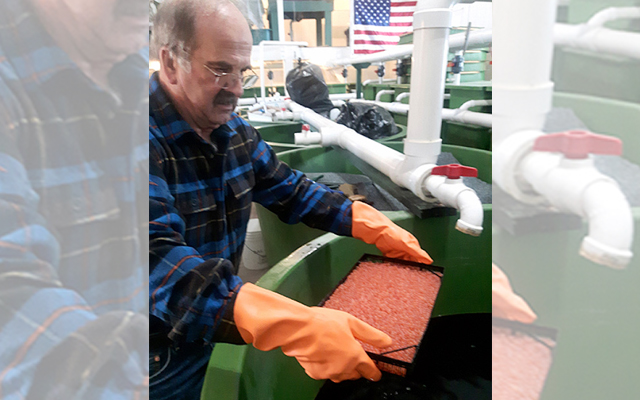
SHERIDAN, Maine — On Wednesday, March 6, Atlantic Salmon for Northern Maine volunteers and the president of the St. John Basin Salmon Recovery Inc. transported approximately 42,000 eyed salmon eggs to the Dug Brook Hatchery in Sheridan, near Ashland.
The eggs will be hatched to the unfed fry stage at the facility and stocked into an Aroostook River tributary. The fry introduction will add to the millions of salmon the group has released to the Aroostook River over the past 20 years.
Last year, according to ASNM officials, the effort resulted in the Aroostook’s becoming the number-three river in salmon returns in all of Maine.
In a press statement, ASNM said the Aroostook system is the largest St. John River tributary that is accessible to sea-run Atlantic salmon. Together with its twin river, the Tobique, the drainage area is as great as that of the Miramichi River system, and therefore has the capacity to produce as many salmon.
The egg transfer marks a re-commencement of an agreement whereby the Canadian Department of Fisheries and Oceans would supply eggs to support the recolonization of the huge Aroostook drainage with salmon. The agreement was suspended three years ago, when DFO rearranged priorities at the Mactaquac Biodiversity Facility near Fredericton.
Brian Fields, president of ASNM, was ecstatic about the program’s re-commencement.
“This is the boost that we need to re-establish a sustainable wild Atlantic salmon population in the river. It is the result of excellent cooperation between many U.S. government, Canadian government, First Nations’, and Canada, U.S. and international NGOs.”
John Pugh, president of the NB Salmon Council, said “Our organization supported the initiative because it will eventually produce fisheries benefits for members of our affiliated organizations, one of which is Atlantic Salmon for Northern Maine.
“Being an international river, the St. John needs an international effort to re-establish its formerly productive salmon population,” Pugh said. “We hope that the effort continues until the Aroostook becomes self-sustaining.”
Those involved in the project, along with Fields and Pugh, included Gary Giggey, ASNM; John Bagnall, president, SJBSR; John Perley, Tobique First Nation Fisheries Program manager; Danny Bird, NBSC; Patricia Saulis, executive director, Maliseet Nation Conservation Council; Harvey Millar and Lei Harris, DFO; Sean Ledwin, Maine Department of Inland Fisheries and Wildlife; Joel Bader, U.S. Fish and Wildlife Service; Bob O’Donnell, president, Tobique Protective Association); and most importantly, Jim Barresi, who ASNM described as the grandfather of their salmon recolonization program.
For more information, contact either John Bagnall; johnbagnall@rogers.com, or Brian Fields; brdjfields@gmail.com.







